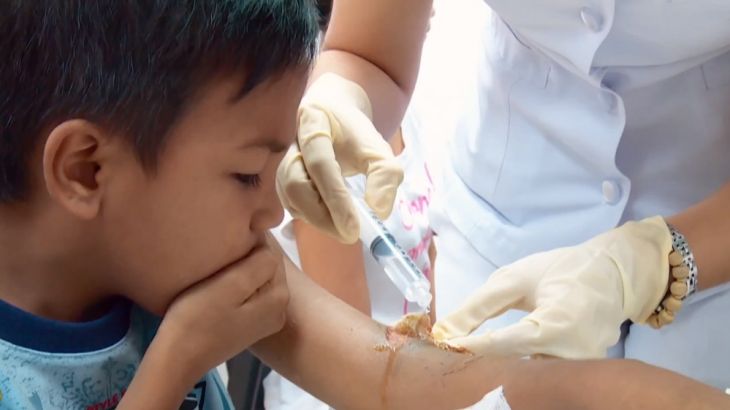
Health: Fighting Diseases in Ethiopia and the Philippines
From the islands of the Philippines to Ethiopia’s Amhara district, meet the health workers tackling rabies and trachoma.
The end is in sight
Aba Wolde Agdew lives in the Amhara province of Ethiopia. He is partially blind from trachoma and cannot work to support his family.
“When the pain comes, it irritates and irritates and makes me cry out,” Agdew says. “What made my problem worse was the death of my children and my tears. It’s tears which killed me.”
Keep reading
list of 4 itemsGaza lost much more than a hospital when it lost al-Shifa
With measles on the rise, rebuilding trust in vaccines is a must
Could a bird flu pandemic spread to humans?
Once infected, the inside of the eyelids begins to contract, pushing a person’s eyelashes inward against the eyes. The pain is excruciating and eventually debilitating.
Long-standing confusion between the symptoms and causes of trachoma has worsened conditions. Agdew relies on his daughter Amalda for everything. However, she too is in danger of losing her eyesight. After removing the infected hair from her father’s eyes, she touched her own eyes, transferring the disease to her.
Amalda and her father are two of 22 million people worldwide suffereing from the infectious disease. Amhara province is the most affected region in the most affected country in the world.
Manteboshi Kibkab and a team of health workers are on a mission to help reduce rates of infection and to save the sight of those already infected. She uses every opportunity to convince villagers that they can overcome trachoma.
Island by Island: Fighting Rabies in the Philippines
Young Bibo Ocampo sits in a hospital in the Philippines after a serious dog bite. His mother Rowena Ocampo is worried sick that her son will go insane and die.
The root cause of her concern is the viral disease rabies which is fatal, once symptoms show, but is also entirely preventable. Still, the Philippines has some of the highest rates of rabies cases in the world and health workers are on the front lines of eliminating the disease.
Every year, the disease leads to the deaths of 200 to 300 Filipinos and 300,000 visits to “bite centres” like the Research Institute for Tropical Medicine. A life-saving series of vaccine treatments is available, although not everyone can afford them.
The Philippines is determined to eradicate rabies in people and in dogs by 2021. It is less costly and more effective to vaccinate dogs and target the source of the disease than to try and vaccinate all people.
While Dr Charles Rupprecht trains veterinarians to properly diagnose rabies in dogs, health volunteers travel from island to island to vaccinate dogs across the country.
“A vaccine on the global market for dogs’ wholesale price is less than 25 cents. Do the comparison, the health economics are clear, you vaccinate dogs – you relieve the burden of human rabies,” Rupprecht says.
“You vaccinate people, it’s the incurable wound. You will be vaccinating people forever.”